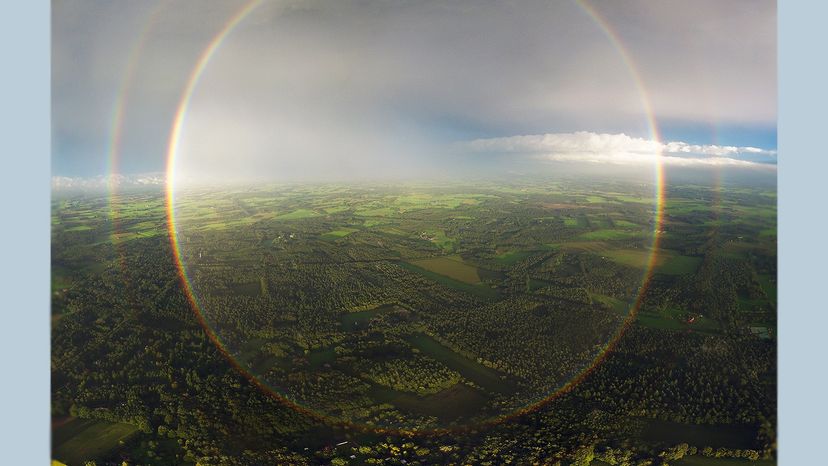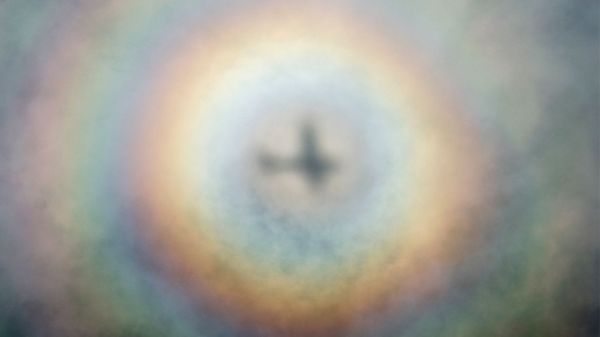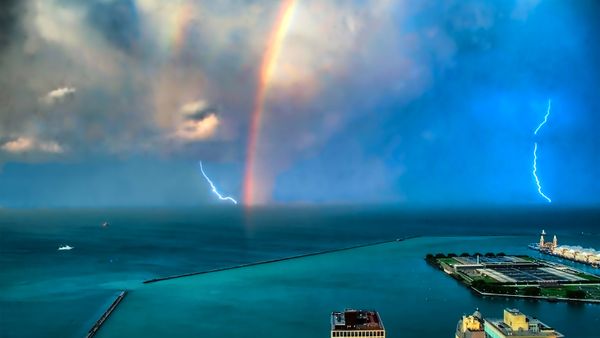Your ability to perceive some of those colors is dictated by your physical whereabouts. Each drop in that curtain of liquid water is a tiny prism. They all break white light into distinct beams of red, orange, yellow, green, blue, indigo and purple light. But your eyeballs will never see more than one color per drop (if that). All the others exit the drop at the wrong angle to meet your pupils.
Purple is the lowest color on a rainbow because purple light exits water beads at the sharpest angle: 40 degrees relative to its entry point. Meanwhile, red light — which sits at the top of a rainbow — gets sent back in your general direction at a 42-degree angle.
A key factor here is the location of the antisolar point. This is the spot in the sky — or on the ground — that's exactly 180 degrees away from the sun relative to your perspective. On a bright, sunny day, the head of your shadow marks the antisolar point. Every rainbow is a perfectly circular ring centered around this very spot.
Yet if you're standing at ground level, you won't be able to see the circle's lower half. Indeed, from this vantage point, basically any part of a rainbow that dips below the horizon is rendered invisible. One of the reasons for this is that the close proximity of Earth's surface limits the amount and concentration of raindrops within your line of sight.
As such, the percentage of a rainbow that's visible to most people is directly correlated with the sun's position. When our solar neighbor is just barely peeking over the horizon, the antisolar point will be fairly high up, affording you the chance to see a much bigger rainbow than you would when the sun climbs higher.
Conversely, if the sun is more than 42 degrees above the horizon, it becomes impossible for ground-based observers to see any portion of a rainbow whatsoever. But when you're soaring in an aircraft, things get more interesting. On rainy or misty days, airplane passengers and pilots occasionally see full circular rainbows. Better yet, in 2013, photographer Colin Leonhardt captured this picture of a circular double rainbow while flying around Australia's Cottesloe Beach.



